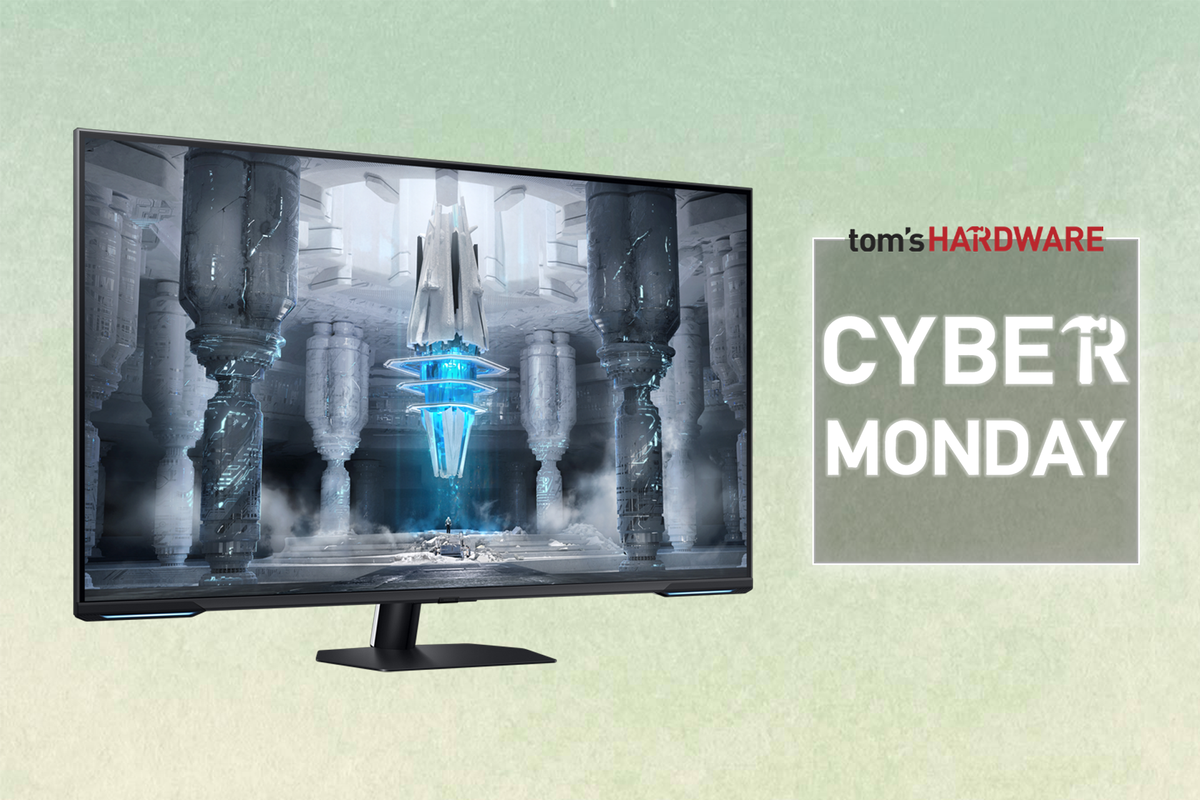Top500.org on Tuesday released its 65th list of the world's most powerful supercomputers, revealing the dominance of American AMD-based systems amid a lack of new entries from China, as well as the performance of supercomputers used by AI giants such as xAI and OpenAI.
The latest update to the global high-performance computing rankings places the AMD Instinct MI300A-based El Capitan at the forefront with Rmax performance of 1.7 FP64 ExaFLOPS, followed by the AMD-powered Frontier (1.353 ExaFLOPS) and Intel-based Aurora (1.012 ExaFLOPS) as the top three exascale-class systems, all of which are operated by U.S. Department of Energy laboratories.
The world's fourth-most most powerful supercomputer — Germany's Jupiter Booster, based on Nvidia's GH200 platform — is a new entrant offering Rmax performance of 0.793 ExaFLOPS. Rounding out the top five, Microsoft's Eagle achieved 0.561 ExaFLOPS.
El Capitan, located at Lawrence Livermore National Laboratory in California, achieves 1.742 ExaFLOPS on the HPL benchmark using AMD's fourth-generation EPYC processors and Instinct MI300A accelerators, all within an HPE Cray EX255a framework. It comprises over 11 million cores and uses the HPE Slingshot interconnect.
El Capitan also topped the companion High Performance Conjugate Gradients (HPCG) performance list with 17.1 PetaFLOPS and in the HPL-MxP mixed-precision benchmark with 16.7 ExaFLOPS. As for energy efficiency, it stands at 58.9 GigaFLOPS per watt.
Frontier, the second-place system in HPL, is installed at Oak Ridge National Laboratory in Tennessee and achieved 1.353 ExaFLOPS. It uses AMD's third-generation EPYC CPUs, Radeon Instinct 250X accelerators, and HPE Cray EX235a infrastructure with the same Slingshot interconnect. It operates with over 8.6 million cores.
Frontier ranks third in the HPCG benchmark (behind Japan's Fugaku) with 14.05 petaflops. Frontier also took third place in the HPL-MxP benchmark with 11.4 ExaFLOPS. Its energy efficiency works out to 54.98 GigaFLOPS per watt.
Aurora is housed at Argonne National Laboratory in Illinois and recorded 1.012 ExaFLOPS on the HPL benchmark for the bronze medal in HPL. Built on Intel Xeon CPU Max and Data Center GPU Max (aka Ponte Vecchio) components, it relies on an HPE Cray EX installation using the Slingshot interconnect. It secured the second spot in the HPL-MxP benchmark with 11.6 ExaFLOPS, but it's in fourth place on the HPCG benchmark at 5.6 PFLOPS.
JUPITER Booster is Europe's first system in this performance class. The machine is installed at the Jülich Supercomputing Centre in Germany and reaches its fourth-place spot with a preliminary 793.4 PFLOPS in HPL. JUPITER Booster uses Nvidia Grace Hopper hardware on Eviden's BullSequana XH3000 platform with direct liquid cooling and HP's Slingshot networking. It is currently being brought online.
Microsoft Azure's Eagle system holds the fifth position in HPL with 561 PFLOPS using Xeon Platinum 8480C processors and Nvidia H100 GPUs.
Although CPUs from AMD power two of the world's highest-performing processors and five out of Top 10 machines, a detailed analysis of the June 2025 Top 500 list reveals that Intel processors are used in 294 of the 500 systems. AMD follows with 173 supercomputers.
Nvidia systems appear in 13 entries, showing early traction for the Arm-compatible Grace Hopper architecture. Nine systems are based on other Arm processors, such as Fujitsu's A64FX. An additional six systems use other processor types, including IBM Power9 and China’s Sunway architecture.
The U.S. extended its numerical lead in total systems in the 65th list, while China continued its downward trend as it no longer submits results of its latest systems to Top500.org. As a result, there are 175 American systems, 47 Chinese supercomputers, and 41 German machines in the Top 500 list.
On the energy efficiency front, Germany's JEDI system leads with 72.73 GigaFLOPS per watt, followed by France’s ROMEO-2025 at 70.91 and Adastra 2 at 69.1. All three use BullSequana XH3000 infrastructure. El Capitan and Frontier ranked 26th and below on energy, reflecting a different balance between performance and efficiency.
Follow Tom's Hardware on Google News to get our up-to-date news, analysis, and reviews in your feeds. Make sure to click the Follow button.

 5 months ago
69
5 months ago
69






 English (US) ·
English (US) ·